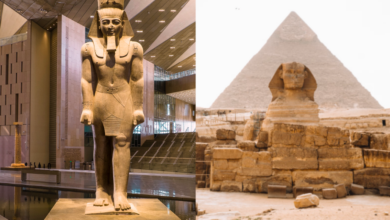
A study published on the Journal of Archaeological Science and the University of York website has revealed that scientists carried several forensic tests on an ancient Egyptian mummy, which proves that the embalming practice is older than assumed.
Dating to around 3,700-3,500 BC, the mummy is currently housed in the Egyptian Museum in Turin, Italy.
“It is the first time that extensive tests have been carried out on an intact prehistoric mummy, consolidating the researchers’ previous findings that embalming was taking place 1,500 years earlier than previously accepted,” the study said.
The researchers discovered the embalming recipe included plant oil, heated conifer resin, an aromatic plant extract, plant gum and sugar. It also included “antibacterial agents” that have been commonly used in similar amounts by Egyptian embalmers during their peak 2,500 years later.
“The study builds on the previous research from 2014 which first identified the presence of complex embalming agents in surviving fragments of linen wrappings from prehistoric bodies in now obliterated tombs at Mostagedda in Middle Egypt,” the report said.
The scientist team, featuring researchers from the Universities of York, Macquarie, Oxford, Warwick, Trento and Turin, discovered that the mummy belongs to Upper Egypt which signifies that the embalming recipe had been widely used.
Stephen Buckley, archaeological chemist and mummification expert from the University of York’s said that “having identified very similar embalming recipes in our previous research on prehistoric burials, this latest study provides both the first evidence for the wider geographical use of these balms and the first ever unequivocal scientific evidence for the use of embalming on an intact, prehistoric Egyptian mummy”.
“Moreover, this preservative treatment contained antibacterial constituents in the same proportions as those used in later ‘true’ mummification. As such, our findings represent the literal embodiment of the forerunners of classic mummification, which would become one of the central and iconic pillars of ancient Egyptian culture,” he said.




